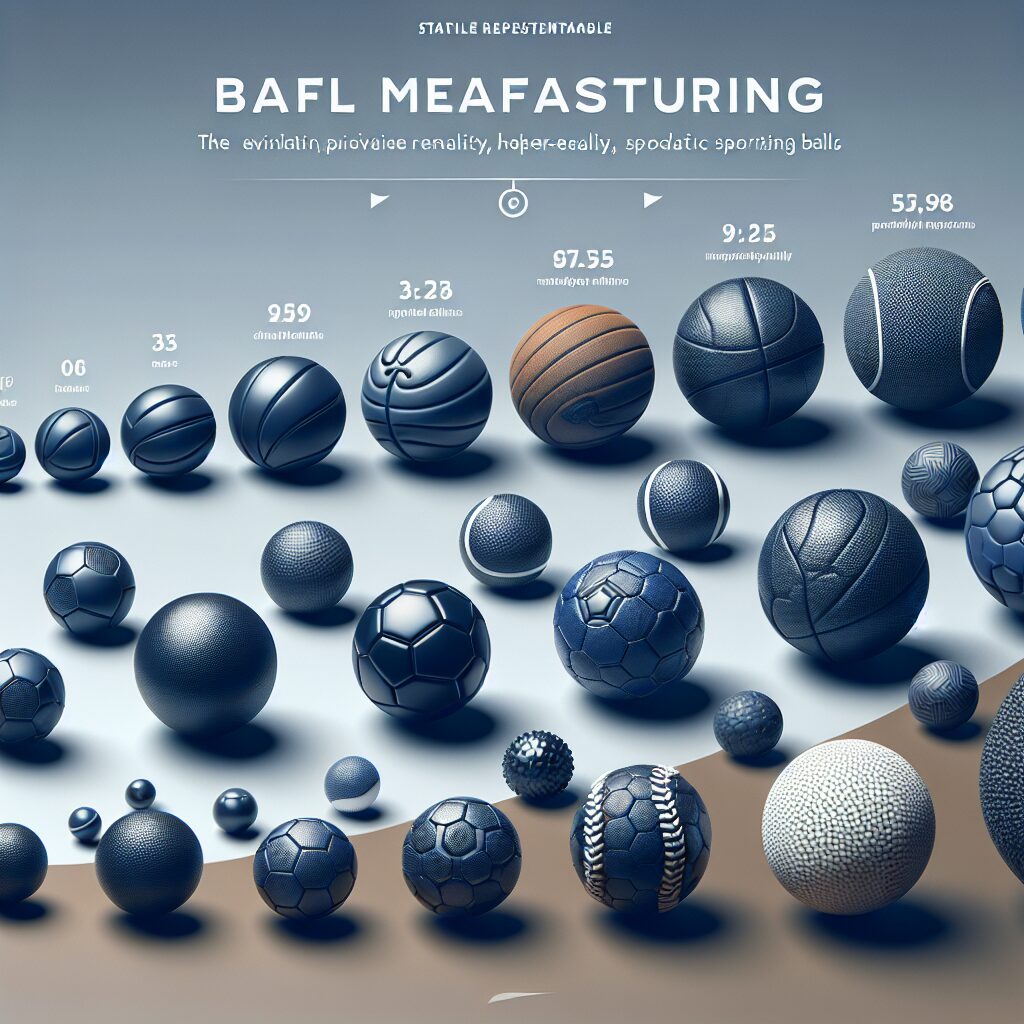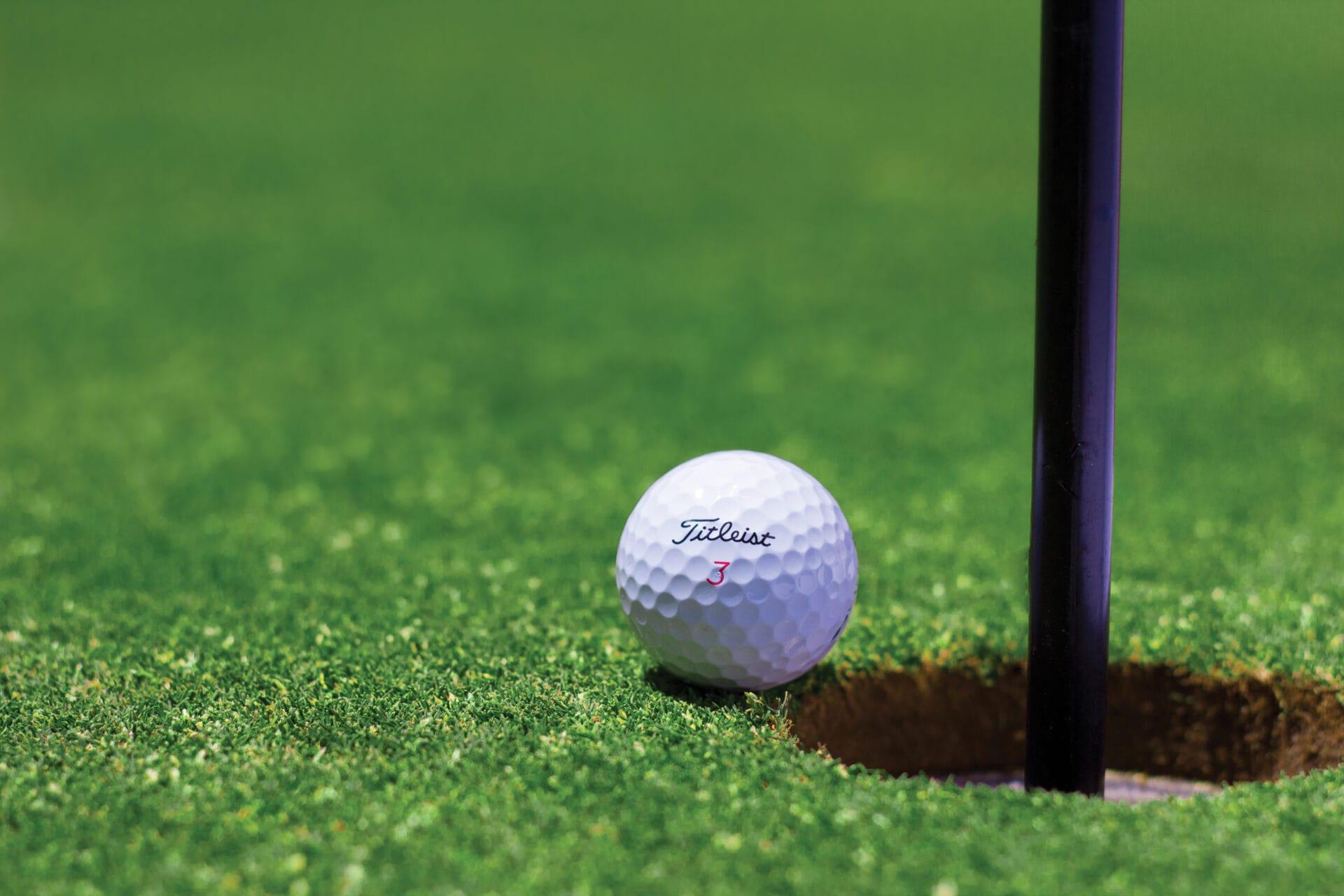Advances in Ball Manufacturing: Shaping Design
In the world of sports, precision and performance are of utmost importance, and this holds true for the manufacturing of sports equipment as well. When it comes to ball manufacturing, cutting-edge techniques and materials have revolutionized the way balls are designed and shaped. One unique fact to consider is that modern ball manufacturing is not just limited to sports. It has expanded to cater to various industries, including aerospace and robotics. These advancements have led to significant impacts in terms of durability, performance, and overall user experience.
One of the key takeaways of these advances is the use of innovative materials in ball manufacturing. Traditional materials like leather and rubber have been replaced by high-performance synthetic materials that offer enhanced strength and elasticity. For instance, the use of composite materials such as carbon fiber and polyurethane has resulted in balls that are not only lighter but also more resistant to wear and tear. This has greatly improved the lifespan of sports balls and reduced the need for frequent replacements.
Another important aspect of the evolution in ball manufacturing is the incorporation of sophisticated design techniques. With the advent of computer-aided design and 3D printing, manufacturers now have the ability to create intricate shapes and patterns on ball surfaces. This allows for better grip, aerodynamics, and overall performance. For example, the dimples on a golf ball or the grooves on a soccer ball are strategically placed to optimize trajectory and control. These design advancements have revolutionized the way athletes play their respective sports, giving them a competitive edge.
In the upcoming sections, we will delve deeper into these key takeaways and explore how advances in ball manufacturing have shaped different sports and industries. We will discuss the specific impacts of innovative materials and design techniques, providing insights into how they have altered the playing field. By the end of this article, you will gain a comprehensive understanding of the advancements in ball manufacturing and their significance in today’s sports and beyond. Stay tuned for an in-depth exploration of this fascinating subject.
Key Takeaways
1. Advances in ball manufacturing have led to improved design and performance. With advancements in technology and materials, manufacturers are able to create balls that are more aerodynamic, resistant to wear and tear, and provide better grip.
2. The shape of a ball plays a crucial role in its performance. Manufacturers are experimenting with different shapes, such as dimples, hexagons, and asymmetrical designs, to enhance stability, accuracy, and overall playability.
3. Material selection is critical for optimal ball performance. Advanced materials like polyurethane and composite blends offer improved durability, improved bounce, and reduced friction, making them popular choices for manufacturers.
4. 3D printing technology is revolutionizing ball manufacturing. This process allows for precise customization and optimization of the ball’s shape, surface texture, and internal structure, resulting in enhanced performance characteristics for different sports.
5. Environmental sustainability is becoming a key focus in ball manufacturing. Manufacturers are exploring eco-friendly options like biodegradable or recycled materials, as well as adopting manufacturing processes that minimize waste and energy consumption.
Overview of Advances in Ball Manufacturing: Shaping Design
Advances in ball manufacturing have revolutionized the way designers approach the creation of various products, from automotive parts to sports equipment. This article explores the latest innovations and techniques in ball manufacturing that have shaped design in a myriad of industries.
The Impact of Material Advancements
One of the key factors driving advancements in ball manufacturing is the development of new materials. High-performance polymers, ceramics, and composites are now widely used, offering enhanced durability, precision, and performance. Manufacturers are constantly researching and experimenting with materials to optimize the characteristics of balls, resulting in improved products across various applications.
Design Optimization for Functionality
Advances in ball manufacturing have allowed designers to optimize ball shapes and structures for enhanced functionality. By analyzing complex factors such as aerodynamics, friction, and impact, designers can tailor ball designs to meet specific performance requirements. For example, in the automotive industry, aerodynamically optimized balls are used in components like constant velocity joints to reduce energy loss and improve fuel efficiency.
The Role of Technology in Ball Manufacturing
Technology plays a critical role in the advancement of ball manufacturing. Cutting-edge techniques such as computer-aided design (CAD) and computer numerical control (CNC) machining enable precise and intricate shaping of ball surfaces. Additionally, 3D printing technology has opened new possibilities for manufacturing customized balls with complex geometries, leading to unique design applications.
Enhancing Durability and Longevity
With continuous improvements in ball manufacturing, durability and longevity of ball products have significantly increased. Advanced surface treatments, such as heat treatment and coating technologies, enhance the wear resistance and corrosion protection of balls. This ensures that the designed products can withstand demanding operating conditions, resulting in extended lifespans and reduced maintenance costs.
Revolutionizing Sports Equipment
Advances in ball manufacturing have had a profound impact on the design and performance of sports equipment. From golf balls to soccer balls, manufacturers have introduced innovative designs to optimize the playing experience. Improved aerodynamics, better balance, and increased ball responsiveness have all been achieved through the application of advanced manufacturing techniques, benefiting athletes and sports enthusiasts alike.
Conclusion
Advances in ball manufacturing have fueled innovation in numerous industries by shaping the design of various products. The use of new materials, design optimization, technological advancements, enhanced durability, and the revolutionizing of sports equipment have all contributed to the advancement of ball manufacturing. As technology continues to evolve, we can expect further improvements and exciting possibilities in the future of ball design.
Top 5 Expert Tips for Leveraging Advances in Ball Manufacturing: Shaping Design
- How can you incorporate high-performance materials into your product design to enhance performance and durability?
- What design optimizations can be implemented to improve functionality and meet specific performance requirements?
- Which advanced manufacturing technologies, such as CAD, CNC machining, or 3D printing, can be utilized to shape ball surfaces effectively?
- How can you apply surface treatments and coatings to enhance the durability and longevity of ball products in your industry?
- What innovative designs and techniques can you explore to revolutionize the sports equipment you produce?
Frequently Asked Questions
1. What is the significance of advances in ball manufacturing for shaping design?
Advances in ball manufacturing have a significant impact on shaping design as they provide designers with a broader range of possibilities in terms of material, texture, and performance. These advancements allow for the creation of balls that cater to specific needs and preferences, leading to more innovative and tailored designs.
2. How do advancements in ball manufacturing enhance performance?
Advancements in ball manufacturing enhance performance by offering better durability, improved control, increased speed, and enhanced spin capabilities. Manufacturers utilize innovative materials and cutting-edge production techniques to create balls that optimize player performance, helping them achieve their best on the field or court.
3. Are there any environmental benefits associated with advances in ball manufacturing?
Yes, advances in ball manufacturing have environmental benefits. Manufacturers are increasingly focusing on sustainability by using eco-friendly materials and production methods. This reduces the carbon footprint and promotes a more eco-conscious approach to design, ensuring a greener future for the sports industry.
4. Can advances in ball manufacturing lead to safer game experiences?
Absolutely. Advances in ball manufacturing contribute to safer game experiences by incorporating features that enhance player safety. Through the use of impact-absorbing materials, improved grip, and reduced vibration, manufacturers are able to reduce the risk of injuries during gameplay, ensuring a more secure and enjoyable sports experience.
5. Do advancements in ball manufacturing affect the cost of production?
Advancements in ball manufacturing can impact the cost of production. While new technologies and materials may initially result in higher production costs, economies of scale and increased efficiency in manufacturing processes can eventually lead to more cost-effective production. However, it’s important to note that the cost will ultimately depend on the specific advancements implemented.
6. How do advancements in ball manufacturing address specific sport requirements?
Advancements in ball manufacturing address specific sport requirements by tailoring the design and characteristics of balls to meet the demands of each sport. For example, different textures, bounce rates, and flight patterns are utilized to ensure optimal performance in sports like soccer, basketball, tennis, and golf.
7. Are there any notable challenges in implementing advances in ball manufacturing?
Implementing advances in ball manufacturing comes with its challenges. Ensuring the right balance of performance, durability, and cost-effectiveness can be intricate. Additionally, extensive testing and regulatory compliance are necessary to meet industry standards, making adherence to quality control processes a crucial aspect for successful implementation.
8. How do advancements in ball manufacturing contribute to innovation in sports equipment?
Advancements in ball manufacturing contribute to innovation in sports equipment by constantly pushing the boundaries of what is possible. By exploring new materials, manufacturing techniques, and design principles, manufacturers can introduce groundbreaking features and performance enhancements. These innovations inspire athletes, coaches, and designers to explore new possibilities and drive the progression of sports equipment.
9. Do advances in ball manufacturing influence player strategies and tactics?
Yes, advances in ball manufacturing can influence player strategies and tactics. Balls with unique characteristics may require players to adjust their techniques and playing styles to optimize performance. For instance, different flight patterns or bounce rates can prompt players to adapt their actions and develop new strategies to gain a competitive edge.
10. How do advancements in ball manufacturing benefit both professional and recreational players?
Advancements in ball manufacturing benefit both professional and recreational players by providing them with improved performance, durability, and overall enjoyment. Professional players can benefit from enhanced precision and control, while recreational players experience increased fun and satisfaction when playing with high-quality balls that mimic the performance of those used in professional settings.
Final Thoughts
The continuous advances in ball manufacturing and shaping design have revolutionized the sports industry. These innovations not only benefit athletes and players at all levels but also excite sports enthusiasts and drive the growth of the market. As manufacturers continue to explore new materials, refine production techniques, and prioritize sustainability, we can expect even more exciting developments in the future.
Advances in ball manufacturing have a profound impact on shaping design, emphasizing the importance of research and development in this field. By constantly pushing the boundaries of what is possible, manufacturers pave the way for improved sporting experiences, enhanced performance, and increased safety. As technology evolves and consumer demands shift, the possibilities for advancements in ball manufacturing are endless, promising an exciting future for sports equipment design.




